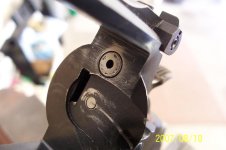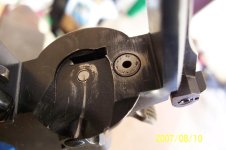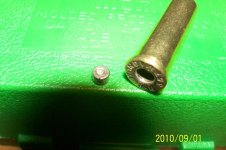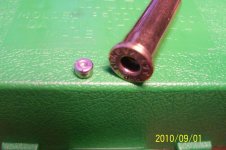OP
Texas Roots
Member
Many thanks for all your responses guys.
OCD1, I'm so disgusted with this, I probably won't contact Remington. I guess I'm skeptical that they really would'nt give a flying flip.
My general comment to all of you about this is that if I knew then what I know now, I'd just be very conscious of my .357 loads while you are out shooting. Be on the lookout for smoky areas around where the primer meets the case and if you see anything that looks suspicious, immediately look at the recoil plate/shield to make sure those gas leaks aren't cutting into your nice handguns.
Make no mistake, it only takes one like that to do some cutting into the metal.
As I have said, I have not experienced this problem with any other handloads of calibers .44 Mag., .44 Spec., .45 ACP, or AR, or .45 Colt regardless of make of brass or primer.
I now have three very nice .357 S&W's that have the flame cut poc marks on the recoil plate. (At least the damage is to the staked-in bushing that can be replaced, thank goodness).
OCD1, I'm so disgusted with this, I probably won't contact Remington. I guess I'm skeptical that they really would'nt give a flying flip.
My general comment to all of you about this is that if I knew then what I know now, I'd just be very conscious of my .357 loads while you are out shooting. Be on the lookout for smoky areas around where the primer meets the case and if you see anything that looks suspicious, immediately look at the recoil plate/shield to make sure those gas leaks aren't cutting into your nice handguns.
Make no mistake, it only takes one like that to do some cutting into the metal.
As I have said, I have not experienced this problem with any other handloads of calibers .44 Mag., .44 Spec., .45 ACP, or AR, or .45 Colt regardless of make of brass or primer.
I now have three very nice .357 S&W's that have the flame cut poc marks on the recoil plate. (At least the damage is to the staked-in bushing that can be replaced, thank goodness).





